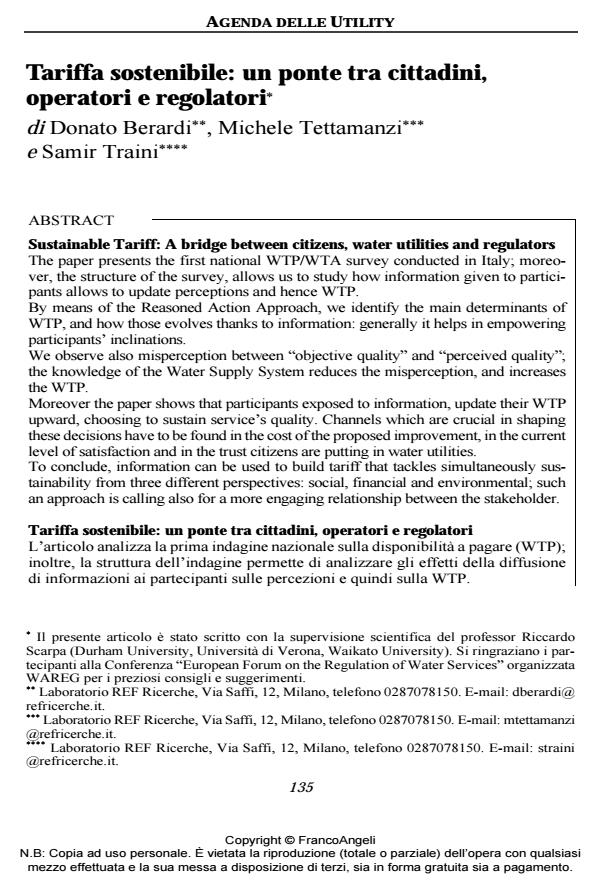Sustainable Tariff: A bridge between citizens, water utilities and regulators
Journal title ECONOMIA PUBBLICA
Author/s Donato Berardi, Michele Tettamanzi, Samir Traini
Publishing Year 2020 Issue 2020/1
Language Italian Pages 35 P. 135-169 File size 629 KB
DOI 10.3280/EP2020-001006
DOI is like a bar code for intellectual property: to have more infomation
click here
Below, you can see the article first page
If you want to buy this article in PDF format, you can do it, following the instructions to buy download credits

FrancoAngeli is member of Publishers International Linking Association, Inc (PILA), a not-for-profit association which run the CrossRef service enabling links to and from online scholarly content.
The paper presents the first national WTP/WTA survey conducted in Italy; moreover, the structure of the survey, allows us to study how information given to participants allows to update perceptions and hence WTP. By means of the Reasoned Action Approach, we identify the main determinants of WTP, and how those evolves thanks to information: generally it helps in empowering participants’ inclinations. We observe also misperception between "objective quality" and "perceived quality"; the knowledge of the Water Supply System reduces the misperception, and increases the WTP. Moreover the paper shows that participants exposed to information, update their WTP upward, choosing to sustain service’s quality. Channels which are crucial in shaping these decisions have to be found in the cost of the proposed improvement, in the current level of satisfaction and in the trust citizens are putting in water utilities. To conclude, information can be used to build tariff that tackles simultaneously sustainability from three different perspectives: social, financial and environmental; such an approach is calling also for a more engaging relationship between the stakeholder.
Keywords: Water, regulation, willingness to pay, information
Jel codes: L5, L95, Q51, D8
Donato Berardi, Michele Tettamanzi, Samir Traini, Tariffa sostenibile: un ponte tra cittadini, operatori e regolatori in "ECONOMIA PUBBLICA " 1/2020, pp 135-169, DOI: 10.3280/EP2020-001006